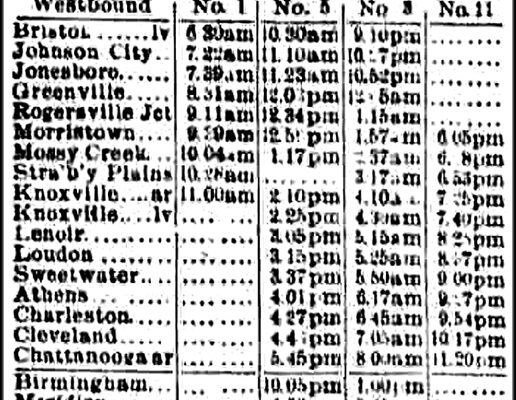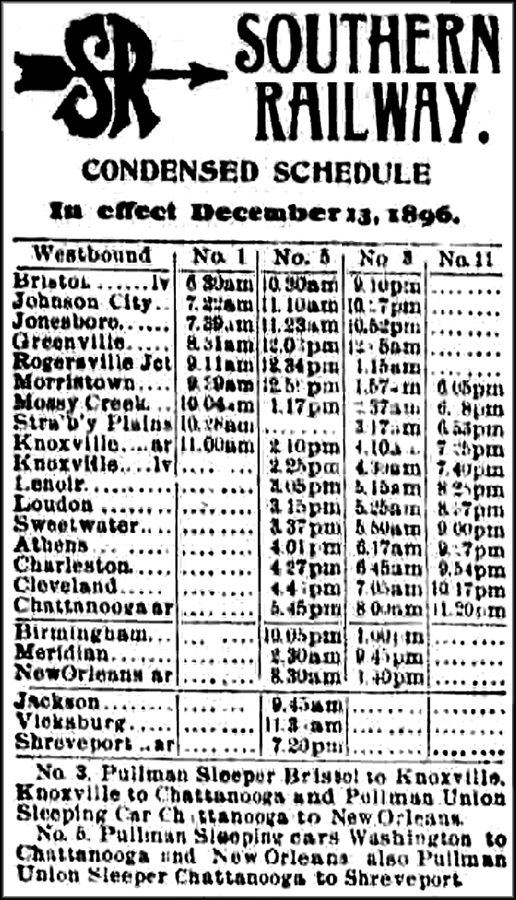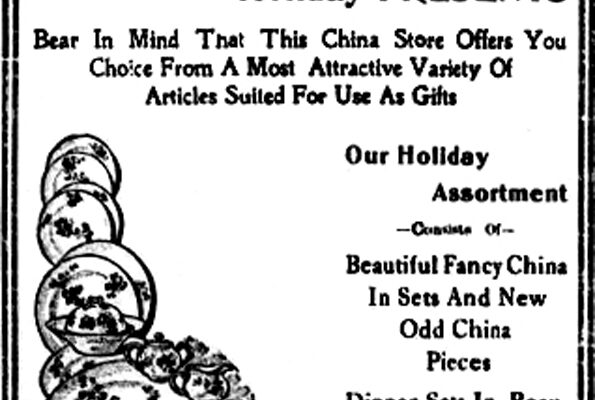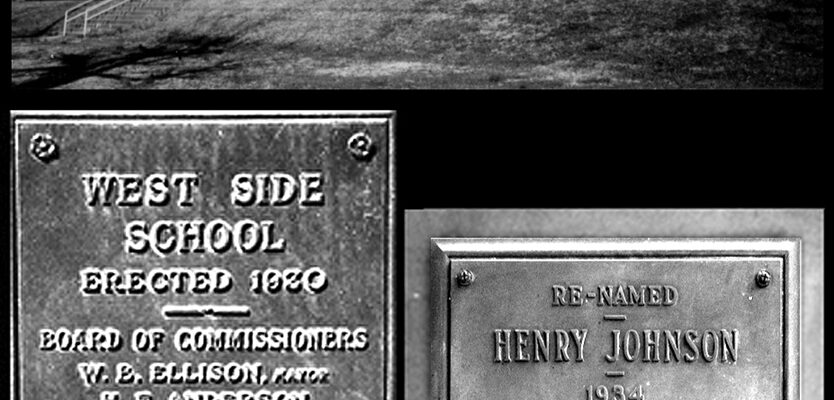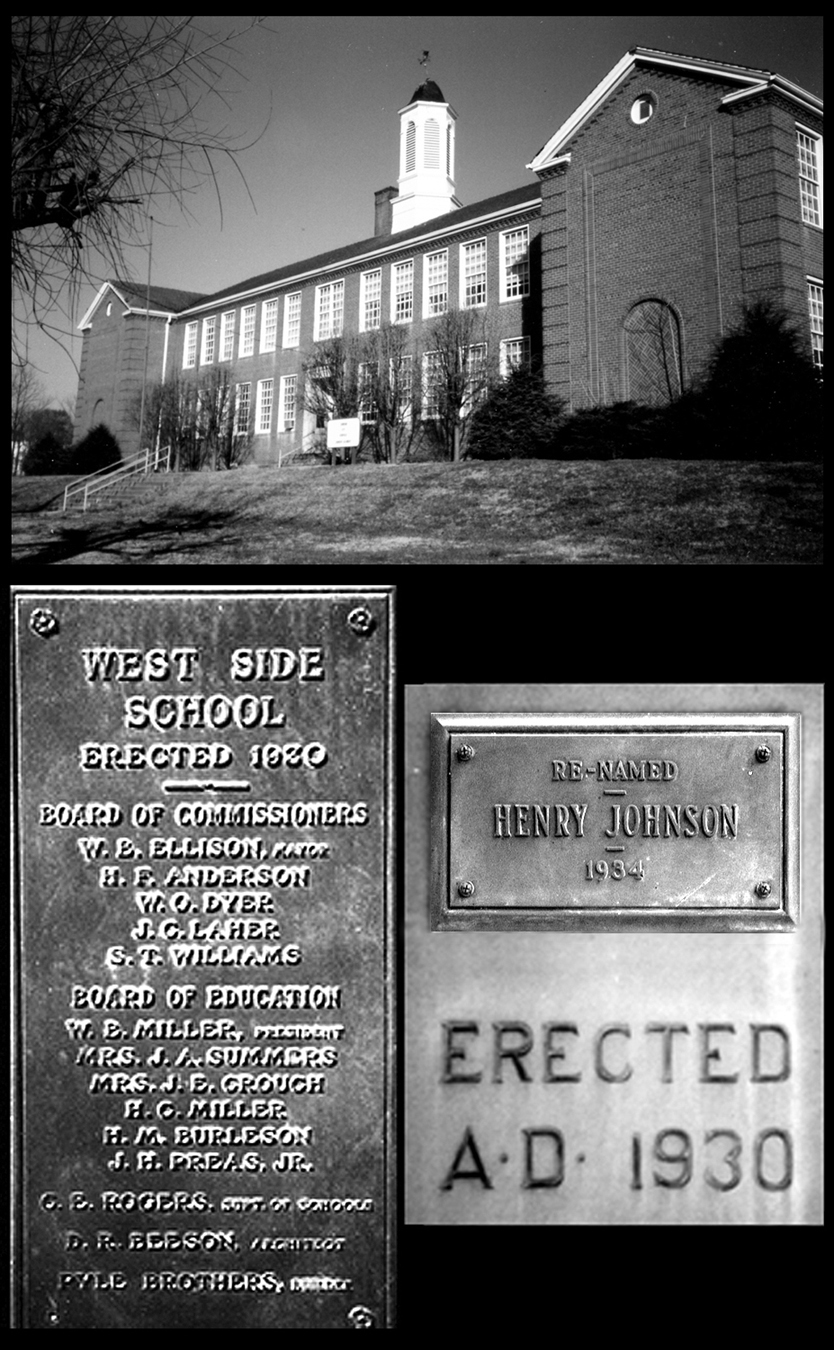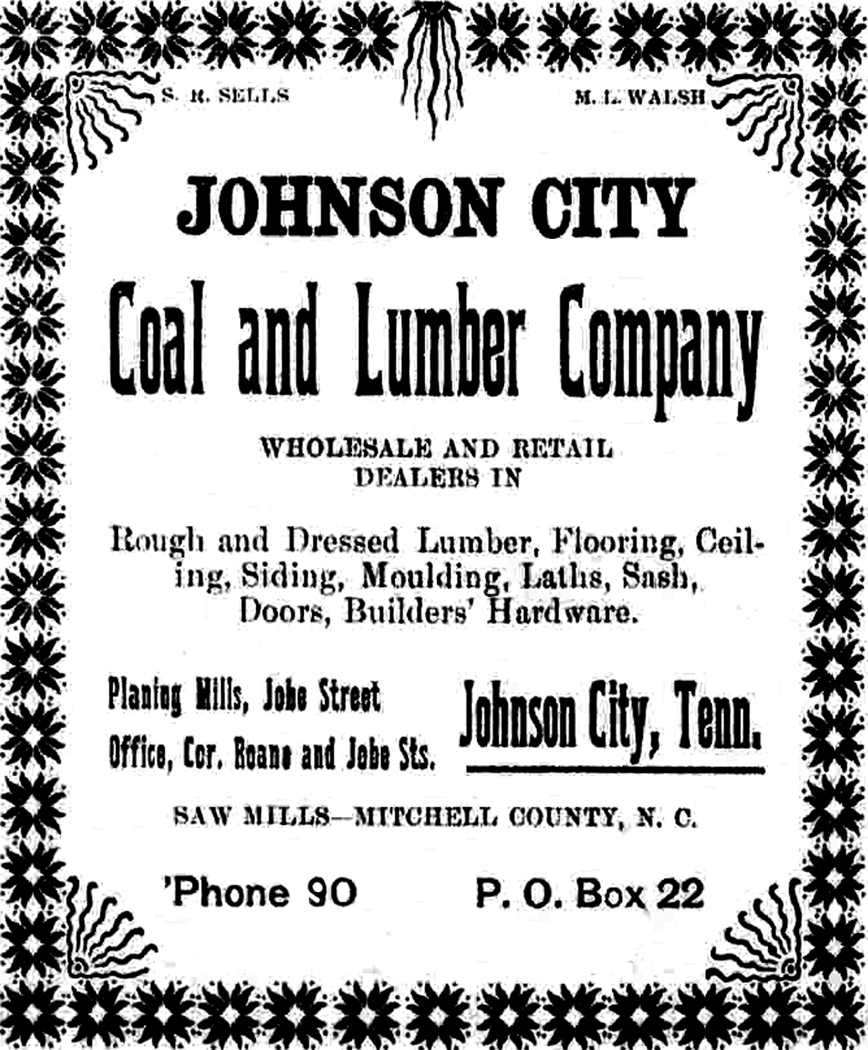An October 1895 headline in The Comet newspaper proclaimed these eye-catching words: “Only a Few More Days Until Walter L. Main's Grandest and Best Show Will be Seen in all Its Glory.”
The big show came as announced, delighting thousands of expectant attendees who enthusiastically clamored for admission to the huge tent, which was reported to be the largest ever constructed at that time.
No exhibition that had ever visited Johnson City was so comprehensive in its methods of advertising or had attracted so much attention by its posted pictorial wall announcements.
The finest lithographed printing ever seen in this section had been scattered profusely over the entire countryside for miles around for people to scrutinize. Even a brief moment's reflection would readily convince a resident that none but a meritorious amusement enterprise, backed by unlimited capital, could afford to do such extensive advertising, something unheard of in those days.
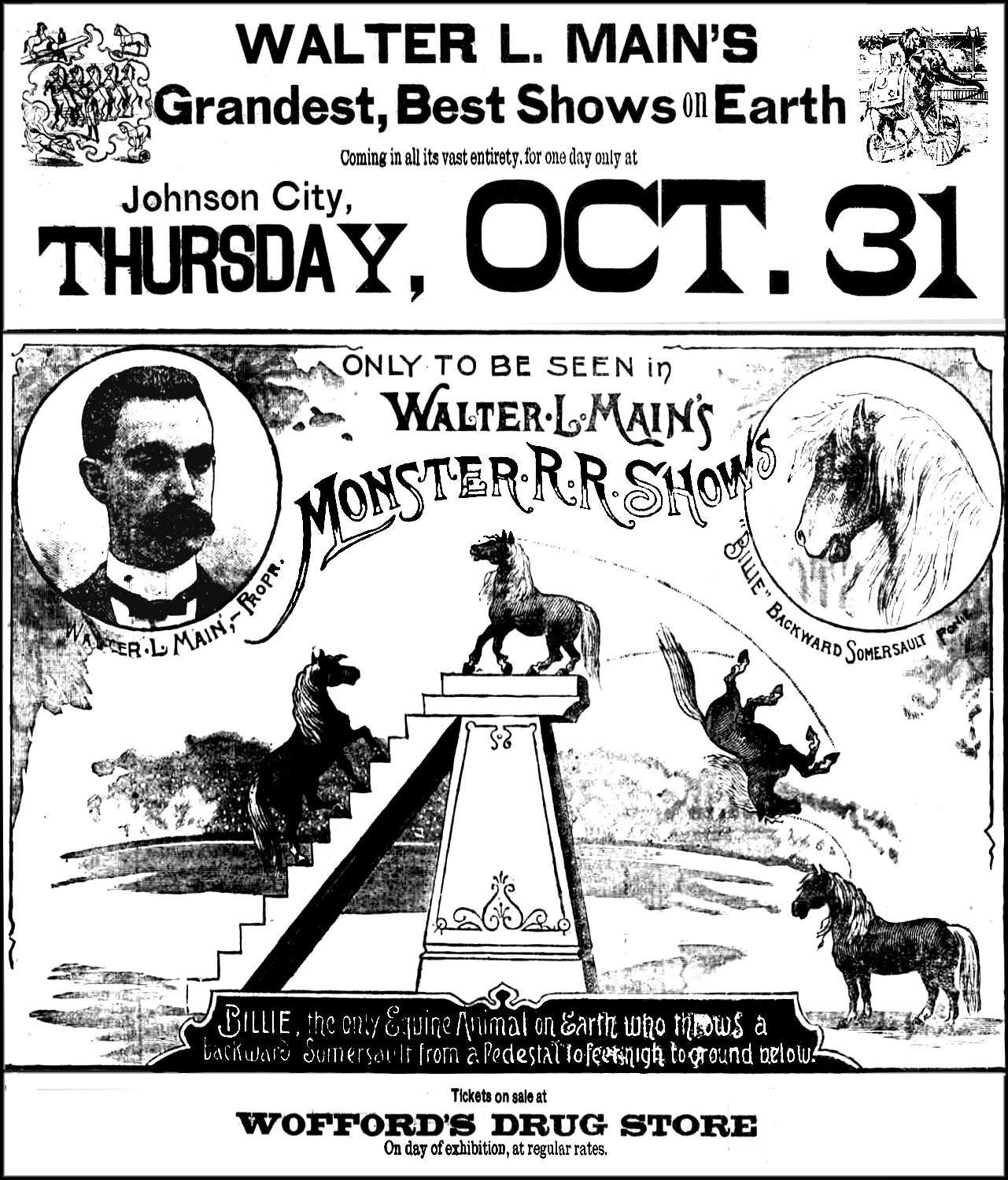
Advertisement for Walter L. Main's Show in Johnson City
Residents were gratified to learn that even the marvelous specimens of “printer's ink” could not begin to convey the story of the remarkable wonders to be seen in person at the upcoming event.
The attraction possessed such well-known features as Miss Gracie Thomas, the world's greatest equestrienne; “Wallace,” the only lion that actually rode a horse and an elephant; Mr. Frank Miller, who stood at the head of the bareback riders of profession; the Four Rosaria Brothers, Europe's foremost acrobats; Stirk and Zeno, acknowledged monarchs of the air; a double troupe of Royal Japanese performers; Miss Dollie Miller, the greatest lady aerial performer on either side of the Atlantic; the three famous French grotesques, known as the Renos; a troupe of 20 humanly educated horses and ponderous elephants, besides many other unique novelties.
It was also a well-know fact that the great shows presented the finest zoological collection in America and a hippodrome of unsurpassed merit. The impressive street parade, which moved from the showground promptly at 10 a.m. was, by itself, worth the price of a ticket, as well as traveling many miles to see the extravaganza.
The sublime culmination of the art of training was marvelously shown in the equestrian performance, executed by 63 thoroughbreds under the guidance of Joe Berris, America's most famous equine educator appearing with the Walter L. Main Show.
The act introduced the finest specimens of American and Arabian thoroughbred horses executing the grandest and greatest performances ever imagined. It was advertised that a positively wonderful display of such categorical novelty, absolute originality, unrivalled magnificence and thrilling interest would forever blot out forever previous animal exhibitions.
There were literally rings within rings, platforms on top of platforms and upon all were horses concurrently performing concurrently and moving in five circles in opposite directions. This feature alone was said to be worth more than the price of admittance.
The Roman Hippodrome part of the entertainment was not only interesting but exciting, consisting of chariot, barrel and obstacle races, Roman standing races, cowboy and pony competition, lady riders and many other features too abundant to mention. There was a profusion of horses, prompting the comment that no show could have finer ones anywhere in the world.
The menagerie, always a popular attraction especially with youngsters, was a splendid exhibit of the animal kingdom and was also a noticeable feature that there were no fakes or robbing schemes permitted on the grounds. The entire show was clean cut and of high standards throughout, with performers selected from the upper ranks of professional people and stood second to none.
If the above text was accurate, the Walter L. Main Show must have been quite an attraction for Johnson City and surrounding areas in 1895.






